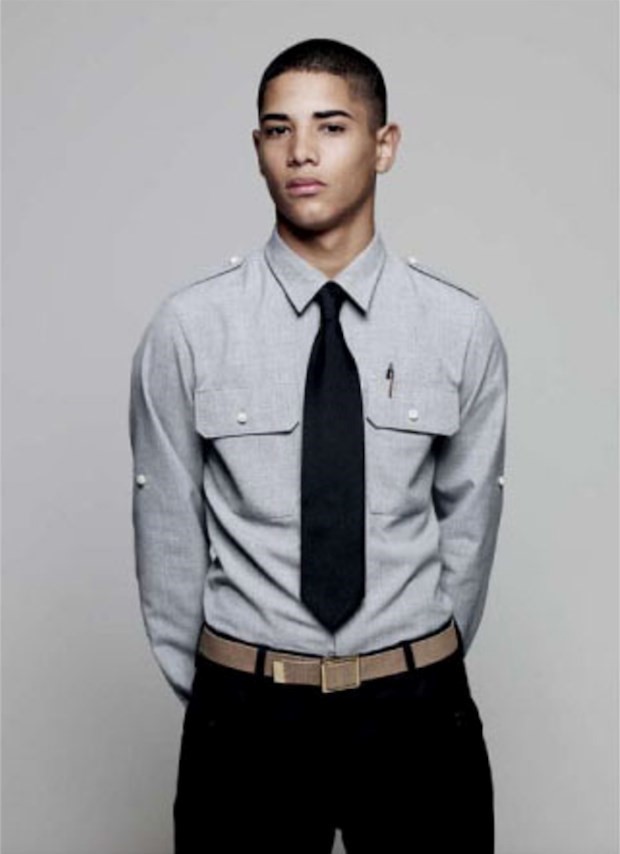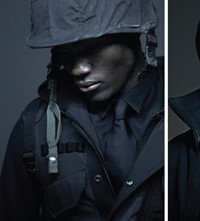Rob Nowill remembers Nom de Guerre, the label that anticipated streetwear culture but didn’t survive long enough to see it
- TextRob Nowill
The Ones That Got Away is a new series by Rob Nowill that examines brilliant and now sadly obsolete menswear brands.
I hate the word ‘streetwear’. It conjures an image of queuing in the rain for product drops, cleaning your trainers with baby wipes, and racking up debts on resale sites. It’s joyless, and cynical, and exclusionary. And it makes me feel like I’m a thousand years old.
Nom de Guerre, the influential New-York-based brand which existed from 2005-2011, anticipated many of the most tiresome aspects of contemporary menswear culture. It was ludicrously pretentious: the brand’s website insisted that it was a ‘social science project’, not a clothing brand. It was sold from a store with no sign on the door, as its founders wanted it to be ‘invisible to the average passer-by.’ And its seasonal lookbooks were littered with pseudo-intellectual quotes: in one, an image of a button-down shirt is accompanied by the line ‘he who speaks of struggle, speaks of sacrifice,’ like something from The Art of War. In its pretensions to artiness, it set a template for a generation of designers that followed in its wake: today, even the most banal t-shirt brands are sending out press releases crowing about their ‘design practice’ and ‘object research.’

But, almost in spite of itself, it remains one of my most-missed brands. And I’m not alone: there are legions of menswear obsessives who still talk about it as a seminal label, bringing credibility and fashion authority to the world of streetwear. In the past few years alone, writers from Grailed, Complex and American GQ have penned eulogies to the brand.
Despite its other excesses, the clothes were remarkably restrained, drawing influence from archival military uniforms and American workwear. There was no branding, and few pieces that were instantly recognisable – though the brand’s paratrooper pants have since become a grail item for menswear nerds (indeed, Kanye West was accused of lifting from their design for his 2014 collaboration with A.P.C.).
Although it was considered a streetwear brand, it was distinct from what we’d called streetwear today. They didn’t produce sweatpants or slogan hoodies. Instead, it came from the early-mid 00s era when American designers were fanatical about fabrics above all else. They had to be Japanese, and they had to be weighty. The brand’s cotton shirts were as thick as tea towels. The denim needed months of wear before it broke in. Though the label was an early adopter of collaborations – an inescapable part of today’s streetwear industry – they avoided hype brands, working instead with labels that shared its quieter approach to design, including Mackintosh and Tricker’s.

Oddly, given how ubiquitous an aesthetic it once was, it now feels like a kind of menswear that has become increasingly difficult to find. It became the defining ‘hipster’ cliché: $500 plaid shirts that looked as though they had come from a thrift store. It began to seem pedantic to be so obsessed with Japanese cotton or selvedge denim, and the brands that had it made it their calling card fell out of fashion. Nom de Guerre struggled to achieve traction beyond the US – in part because of its own determination to stay under the radar – and it shuttered.
The brand made mistakes, and in many ways should be considered a warning to today’s menswear designers. Its cooler-than-thou image and lofty ideals certainly accelerated its downfall. But equally, it makes a lot of contemporary branding, with its ‘hey, guys!’ tone of voice, feel a little desperate. Brands need to exist at a slight remove from us, for us to find them aspirational. A little pretentiousness is no bad thing. But don’t bother with the philosophic quotes.
Rob Nowill is a writer and menswear consultant who contributes to Guardian, AnOther Man, GQ and Vice















